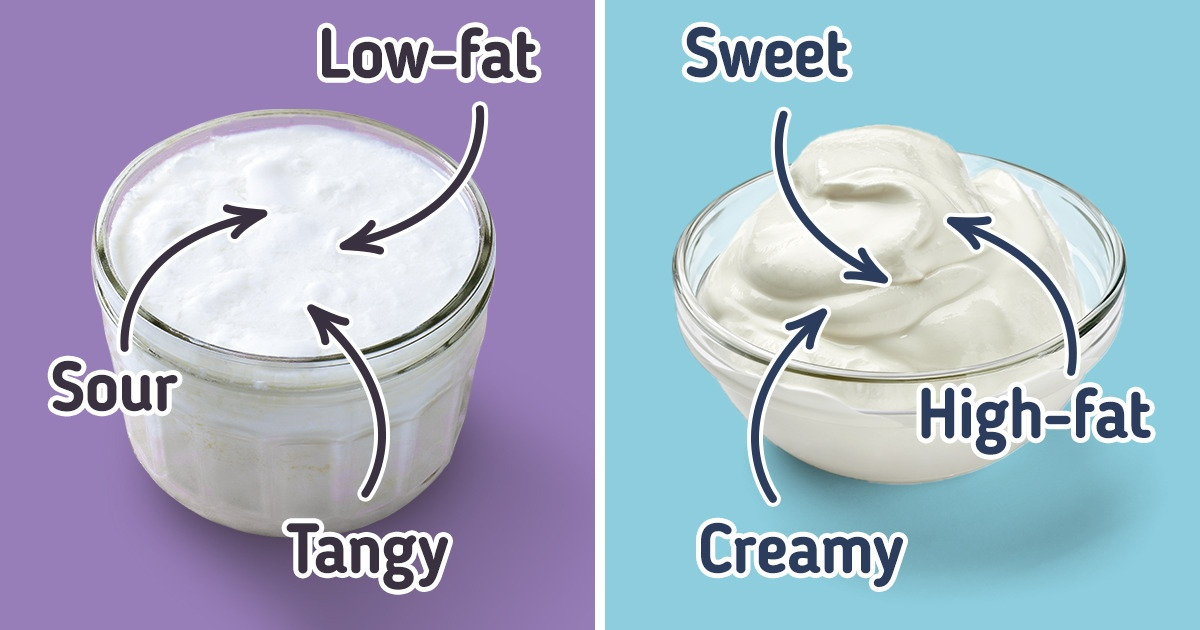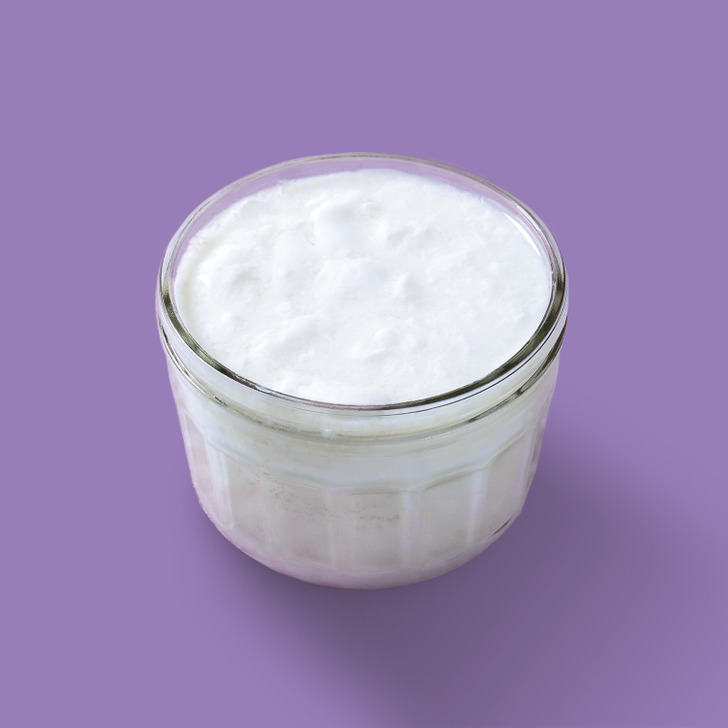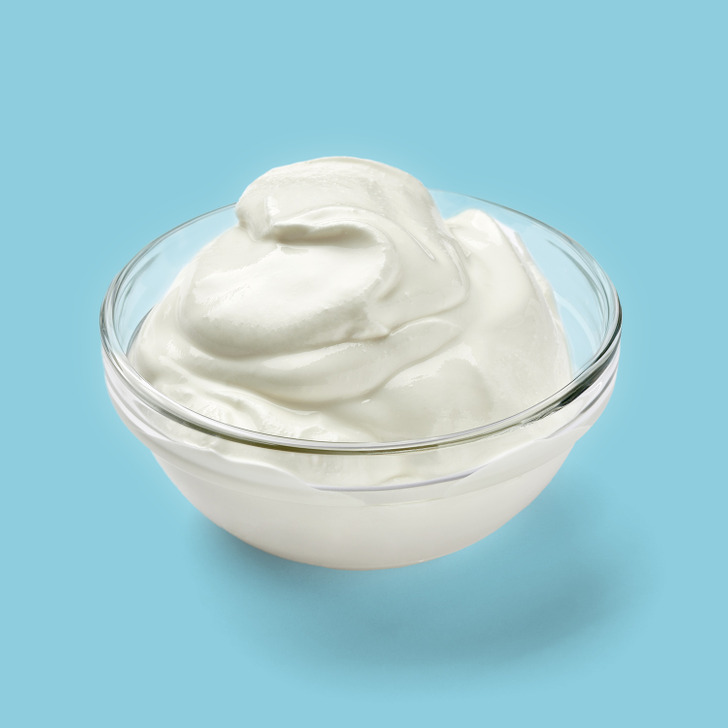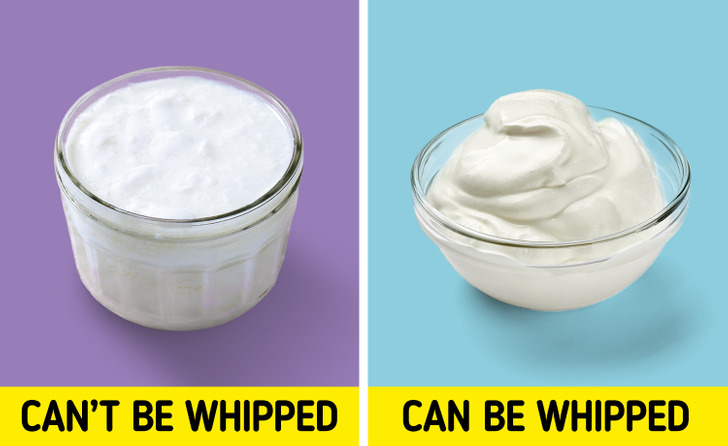What Buttermilk Is, and How It’s Different From Heavy Cream

Buttermilk and heavy cream are very different from each other, despite the fact that both products are made from milk. Buttermilk is obtained by fermenting milk with lactic acid bacteria, and heavy cream is made by removing fat from milk. As a result, both products have different flavors and textures.
5-Minute Crafts is telling you, in detail, what buttermilk and heavy cream are, how they are different from each other, and whether they are interchangeable.
What buttermilk is
Buttermilk is a fermented dairy drink. Originally, it was the liquid that remained after churning butter from cultured or fermented cream. Since most modern butter is made not from sour milk but from ordinary sweet cream, most modern buttermilk is cultivated separately.
Buttermilk is a thick, low-fat, yogurt-like substance made by adding lactic acid bacteria to milk. It also tastes like yogurt with a sour and tangy flavor.
Buttermilk can be consumed as it is or used in cooking. For example, in combination with baking soda, the lactic acid present in buttermilk starts a reaction. Thanks to this, the dough for bread, cookies, or pancakes rises well. In addition, buttermilk is used to marinate meats, especially chicken and pork, and to prepare various sauces and dressings, such as ranch and blue cheese.
What heavy cream is
Heavy cream is a dairy product that is made by skimming the fat off the surface of the milk. In industrial production, the process is accelerated using centrifuges called separators. They spin the milk at high speeds, separating the fat from the rest of the milk content. The fat that rises to the top of the milk is captured while the skim milk remains at the bottom. The fat and milk are then mixed in precise proportions to produce dairy and cream products according to the specified fat content.
Cream differs in fat content, the degree of heat treatment, whether it is whipped or not, and so on. For example, classic heavy cream has a high-fat content of 30% to 40%. This gives it a fatty texture and a creamy, sweet taste. For this reason, it is actively used in baking.
Heavy cream gives cakes, cookies, buns, and other baked goods a rich and creamy texture. Also, heavy cream is added to sauces and soups to give them a creamy taste, or sweetened with sugar and turned into whipped cream that can be used as a topping for desserts.
If buttermilk can be replaced with heavy cream and vice versa
If you need to replace buttermilk with heavy cream and vice versa, keep the following nuances in mind:
- Buttermilk is low in fat, while heavy cream is 30%-40% fat. If a recipe calls for heavy cream due to its fat content, buttermilk cannot be substituted for it.
- Buttermilk cannot be whipped, but heavy cream can. If the recipe calls for you to whip heavy cream, buttermilk won’t work here.
- Buttermilk tastes sour, while heavy cream is slightly sweeter. If a recipe calls for adding sourness to a dish, such as buns or cookies, you can’t use heavy cream as it lacks the acidity and tanginess of buttermilk.
- Buttermilk is acidic and reacts with baking soda, but heavy cream does not. This reaction causes the dough for everything you cook, such as cakes and bread, to rise. Therefore, if buttermilk is used as a leavening agent in a recipe, heavy cream won’t work.
- Buttermilk makes foods light and fluffy, while heavy cream makes them rich and creamy. Therefore, if a recipe calls for a product based on these distinctive qualities, swapping them will not work.
- If you really need to use heavy cream instead of buttermilk, you can add a little lemon juice or vinegar to it to add acidity and tanginess.
- Since heavy cream doesn’t react with baking soda or act as a baking powder, you can substitute baking soda with some baking powder in your recipe to do the trick.


